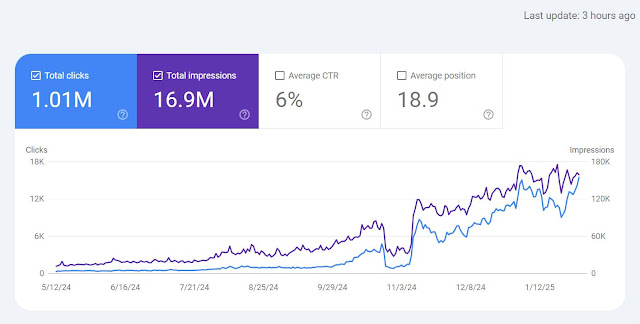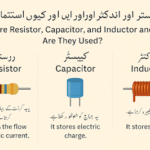I’ve been working with this client for a while now, and if there’s one thing I can say—it’s that he takes SEO seriously. He hires experienced people, puts money behind solid strategies, and always aims for long-term results. And guess what? It works. Every project he touches seems to take off, and this one was no different.
Let me walk you through what made this site grow from average to amazing in less than 9 months.
 𝟭 𝗠𝗶𝗹𝗹𝗶𝗼𝗻 𝗢𝗿𝗴𝗮𝗻𝗶𝗰 𝗖𝗹𝗶𝗰𝗸𝘀 𝘂𝗻𝗱𝗲𝗿 𝟵 𝗠𝗼𝗻𝘁𝗵𝘀 – 𝗖𝗮𝘀𝗲 𝗦𝘁𝘂𝗱𝘆 𝗳𝗿𝗼𝗺 𝗮 𝗖𝗼𝗺𝗽𝗲𝘁𝗶𝘁𝗶𝘃𝗲 𝗡𝗶𝗰𝗵𝗲
𝟭 𝗠𝗶𝗹𝗹𝗶𝗼𝗻 𝗢𝗿𝗴𝗮𝗻𝗶𝗰 𝗖𝗹𝗶𝗰𝗸𝘀 𝘂𝗻𝗱𝗲𝗿 𝟵 𝗠𝗼𝗻𝘁𝗵𝘀 – 𝗖𝗮𝘀𝗲 𝗦𝘁𝘂𝗱𝘆 𝗳𝗿𝗼𝗺 𝗮 𝗖𝗼𝗺𝗽𝗲𝘁𝗶𝘁𝗶𝘃𝗲 𝗡𝗶𝗰𝗵𝗲
1. Starting With a Powerful Domain
We had a head start. The client bought an aged domain with decent authority and a clean backlink profile. It had a history in the same niche, which helped us skip the usual “new site” waiting period.
Aged domains don’t just index faster—they help your content rank sooner and make SEO less of a climb.
2. Going Big With a Macro Niche Strategy
Instead of targeting just one service, we built a site around 100+ related services. That meant we could cover a whole industry, not just a slice of it.
I’ve built plenty of small, focused sites before, and they work. But when it comes to scaling fast and building topical authority, bigger usually wins. Google loves depth, and a macro site shows you know your stuff across the board.
3. Using a Smart SILO Structure
The site’s layout was simple but powerful. Everything was just 1–2 clicks from the homepage. Instead of the usual category > subcategory setup, we created clean, service-based blocks:
-
Homepage → All Services → Subtopics and related content
This made it easier for Google to crawl and helped us pass link authority evenly across important pages.
4. Thoughtful Internal Linking
We didn’t overcomplicate it. Key service pages were linked from the homepage, footer, and sidebar. Blog posts always linked back to relevant money pages.
This made sure Google kept coming back, crawled all the right places, and helped priority pages rank better.
5. Big Investment in Backlinks
The client gave me a flexible budget to work with. I focused on building backlinks to 5–10 key service pages rather than spreading them across the whole site.
We prioritized high-authority domains (DR 70+) and looked for pages that were close to page one but needed a push. The results were quick and obvious—those pages shot up and brought in solid traffic and sales.
6. Redirected a $30K Website
One bold move that paid off: the client redirected an old, valuable website (worth over $30K) to a new landing page on this project.
That redirected site had great backlinks and authority. Passing it over gave our domain an extra SEO boost, helping other pages rank faster—even if it didn’t directly boost sales, it definitely helped with long-term growth.
7. Creating Free Offer Pages
We added pages like “Get X for Free” or “Try Y for Free,” targeting high-volume “free” keywords.
Thanks to the site’s authority, these pages ranked fast and brought in a wave of new visitors. Many of them turned into paying customers, proving that free offers (done right) can really move the needle.
8. Targeting Overlooked Blog Keywords
We focused on low-competition keywords that many big brands ignore—especially those searched in countries like India, Nigeria, and other Tier 2/3 markets.
These keywords brought tons of blog traffic and boosted the site’s overall authority. The client told me this strategy alone tripled their sales. Simple blog content, big results.
The Final Result?
-
From 1,000 to 10,000+ clicks per day
-
Over 1 million organic clicks in just 9 months
-
5–10X estimated sales growth
-
In one of the most competitive niches
Final Thoughts
If there’s one thing this case study proves—it’s that SEO still works, even in tough markets. But only if you’re willing to do it right: invest in quality, think long-term, and keep improving what’s already working.


